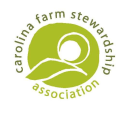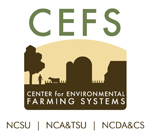What the Survey Revealed
Recently I was asked to conduct a survey about CSA purchasing habits for a group of local farms. Some of our local farmers have seen a decline in the number of “shares” sold for the season. Farmers expend most of their cash during the winter and early spring buying seeds and supplies. “Shares” represent a commitment by customers to support the farm no matter what happens and allows farmers to manage cash flow during the down season. It can also act as a gauge for how much to plant in the upcoming season.
Running a local survey has some limited value because it’s difficult to get enough responses to from which to draw conclusions. Sometimes asking people similar questions directly offers more insight into buying choices and patterns. A farmers’ market is a great place to gather information, but you need a wider net to really get good data on food purchases. The crowd at the market is a bit biased because they have already committed to spend money and time locally. Only some of the questions are relative to their decision process.. What I really needed for a fuller picture was data from non-market-buyers. So I went out in search of some answers personally in many locations, pestering people all over town.
Most of the farmers that responded to my on-line questionnaire had been farming for more than 10 years. About half of the farmers reported the same number of folks in their CSA program from last year but most had an increase in the amount of money families committed to spend. Farmers that had less than desired subscription rates tended to be newer to farming. There was no data about quality or depth of their product line so I can’t assume that they didn’t put out good products. I might tend to draw a conclusion about marketing skills or ability to get into a strong farmers’ market. Based on my personal observations at different markets, the newer farmers had excellent quality products.
The data about subscription shares was confirmed by both market managers and consumers that responded to the survey. About a quarter of consumers were decreasing their spending amounts but they didn’t say why, and about a quarter remained the same in spending from last year. The surprise in the data was that by late April, almost a third of the respondents had not purchased their CSA shares and only about half intended to purchase in the near future. The remainder intended to spend the same amount of money, but not purchase farm shares. It’s not clear why they made that decision.
Drop Points vs Home Delivery
Most of the consumers preferred using one or two drop points over multiple points. A Wake County survey last year showed that less than 1% of respondents went out of the county to other markets and very few went to more than two farmers’ markets regularly. So you might assume that time and distance are critical factors for buying direct. But, when asked if they would prefer home delivery as a replacement for pick-up points, more than two –thirds responded that they would not prefer home delivery. So I’m going to assume consumers that buy-direct consider it important to have a “one-on-one” interaction with their local farmer; something different from the typical grocery store experience.
What I have found doing informal surveying of people, is that the idea of “market” consumers is a bit muddled. I have found three types of consumers buying “farm-to-table” food. First, those that make a conscious choice to allocate time to buy direct and forego other activities to experience shopping at a farmers’ market, or going directly to the farm. They consider it important to have an active relationship with their farmer which is very similar to the way our grandparents and great grandparents viewed the local specialty shops for meat, cheese, and baked goods. Second, there are consumers that want direct food, but they lack the time to go to a market because of work or physical constraints. And third, there are folks that need or prefer the convenience of home or office delivery. This group crosses into the second group that has time and physical constraints. For the second and third group of individuals, the mobile-market business models offer a lot of choice.
Mobile Markets as an Emerging Option
Mobile markets either set up stands or bring a delivery truck with some additional products directly to a workplace, school or centralized location. Employees can pick up their CSA box, pre-order specific products, or select out products that they like when the market truck shows up. But it’s not always the ideal business solution for either the small farmer or the consumer that has specific needs. Most of the business models that are successful around the country combine products from several small farms and have a combination of CSA boxes and additional selections. They are run by either a group of farms or a local non-profit organization. They are expensive to begin but over time the savings in fuel and time to individual farmers can be significant. This model seems to be a good way to find and keep new customers.
Lastly, I want to note that all of the consumers buying direct had two similarities. They are able to plan meals ahead of time and they don’t want to waste anything. The questions they ask of the farmers are two-fold: How do I cook this today? How do I store this for later? Waste not, want not seems to be a common thread.
Flexible Accounts Offer Cash Flow Alternative
And getting back to the folks that were going to spend as much money buying-direct, but didn’t want to commit to the early “shares” I found a couple of data points worth noting. A lot of people don’t want a prepared box. They may try this the first year despite their fear of what’s in the box each week and get tired of wasting food so they switch to buying what they need and add time into their schedule to accomplish the task. . A “market account” where they can “spend-down” on an allotted amount of money seems to serve them better. The few farmers that I found offering this type of service were more apt to take surveys of their customers to find out what they wanted to purchase (and planted those items to meet demands). These farmers also tended to keep pretty good records of what was purchased year to year to help them quantify the data from consumers.
Hopefully, this will help some farmers figure out new ways to find consumers or market to existing ones. And consumers can ask farmers about the possible services they might be willing to offer and what flexibility in the accounts they might be willing to accept.
Growing a stronger local economy for sustainable farms is crucial to food security in our community.









